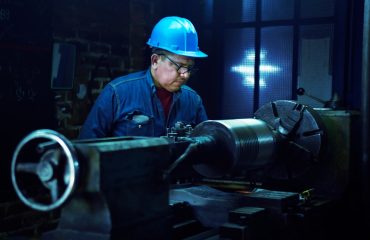In a world increasingly conscious of hygiene and infection control, the development of antibacterial materials has become crucial. Antibacterial steel surfaces, specifically stainless steel infused with antimicrobial properties, are emerging as a powerful tool in the fight against harmful bacteria and germs. This post delves into the science, applications, and future of this innovative technology.
Understanding the Science Behind Antibacterial Steel
Traditional stainless steel, while durable and resistant to corrosion, doesn’t inherently inhibit bacterial growth. Antibacterial steel achieves its germ-fighting capabilities through various methods. One common approach involves incorporating antimicrobial agents directly into the steel during its manufacturing process. These agents, often silver ions or copper ions, are released slowly over time, disrupting the bacterial cell membrane and preventing bacterial proliferation. The concentration and type of antimicrobial agent determine the effectiveness and longevity of the antibacterial properties. Another method involves creating a surface texture that physically inhibits bacterial adhesion, making it harder for bacteria to colonize the surface. This can be achieved through specific surface treatments or by manipulating the steel’s microstructure during manufacturing.
Applications of Antibacterial Steel in Diverse Industries
The versatility of antibacterial steel makes it suitable for a wide range of applications across various industries. In healthcare settings, it finds use in countertops, sinks, and medical equipment, reducing the risk of hospital-acquired infections (HAIs). The food and beverage industry benefits from its use in food preparation surfaces, preventing bacterial contamination and ensuring food safety. Public spaces, such as airports, train stations, and shopping malls, can leverage antibacterial steel in high-touch areas like handrails and door handles to minimize the spread of germs. Even in residential settings, antibacterial steel kitchen appliances and countertops offer an added layer of hygiene.
Effectiveness and Testing of Antibacterial Steel Surfaces
The effectiveness of antibacterial steel is rigorously tested using standardized methodologies. Common tests include assessing the reduction in bacterial colonies on the treated surface compared to untreated stainless steel. These tests typically use specific bacteria strains known for their prevalence in various settings, such as Staphylococcus aureus (MRSA), Escherichia coli, and Pseudomonas aeruginosa. The results are usually expressed as a percentage reduction in bacterial growth or a logarithmic reduction (log reduction). Factors influencing the effectiveness include the type and concentration of antimicrobial agents, the surface area exposed, the duration of exposure, and environmental conditions such as temperature and humidity. Independent certifications and testing are crucial to ensure that the claimed antibacterial properties are truly effective and meet industry standards.
Limitations and Considerations of Antibacterial Steel
While antibacterial steel offers significant advantages, it’s essential to acknowledge its limitations. The effectiveness of the antimicrobial agents can diminish over time due to wear and tear, cleaning procedures, or environmental factors. Regular cleaning and maintenance are crucial to maintain the antibacterial properties. The cost of antibacterial steel is typically higher than that of standard stainless steel, which might be a limiting factor for some applications. Furthermore, the long-term effects of the released antimicrobial agents on human health and the environment require further research and careful consideration. It’s also vital to understand that antibacterial steel is not a replacement for proper hygiene practices; it’s a supplementary measure to improve overall sanitation.
The Future of Antibacterial Steel and Emerging Technologies
Research and development continue to advance the field of antibacterial steel. Scientists are exploring new antimicrobial agents with enhanced effectiveness and longer durability. Nanotechnology is playing a crucial role in developing innovative surface treatments that enhance the antimicrobial properties and improve the resistance to wear and tear. The integration of self-cleaning properties, such as photocatalytic coatings, is another promising area of research. Furthermore, the development of sustainable and environmentally friendly antimicrobial agents is crucial to minimize the potential negative impacts on the environment. The future of antibacterial steel promises even more effective and sustainable solutions for improving hygiene and infection control in various settings.
In conclusion, antibacterial steel surfaces represent a significant advancement in hygiene and infection control. While it’s not a silver bullet, its contribution to reducing bacterial contamination in various environments is undeniable. Ongoing research and development will continue to refine this technology, making it an increasingly important tool in the fight against harmful bacteria and germs.




